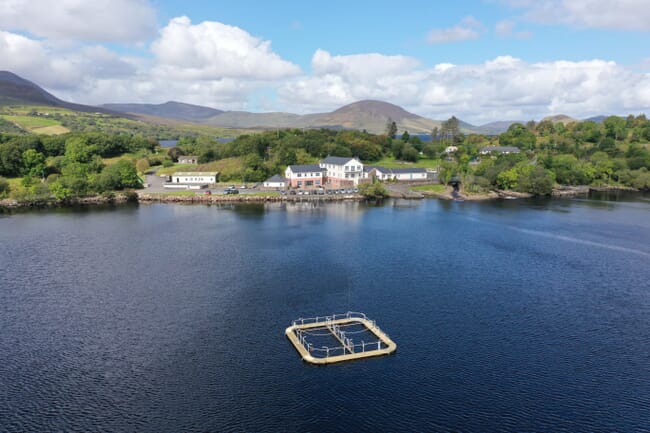
“All Irish salmon smolts are either produced in flow-through systems or in net pens in freshwater loughs [lakes], One of the biggest bottlenecks to the expansion of the sector is site availability and suitability. It is unlikely that there will be an expansion of the industry through new sites in the immediate future. Therefore, any expansion will most likely require innovation or a change in licensed production methods. RAS production of smolts is considered one potential method to increase efficiencies in the use of hatcheries and sea sites,” the Marine Institute’s Jamie Downes and Neil Ruane explain to The Fish Site.
Over the last decade many salmon producing regions have begun the production of larger smolts using RAS technology in order to take advantage of the potential benefits such as reducing the length of the marine phase of production. However, the SALMSON project aims to provide a tailor-made fit for the Irish salmon sector.
“This project is looking to investigate this type of production from an Irish context, the biggest question being whether this conforms with organic standards. It is also demonstrating a build of such a system suited to the Irish industry. Initial capital costs are most likely prohibitive until it can be demonstrated that this type of projection is compatible with the Irish industry.
“It is also important that indigenous knowledge and skills are developed in tandem, as it will be key to ensuring the success of RAS systems if they are to be incorporated into Irish production. This system can be utilised for demonstration and training purposes after the trials,” explain Downes and Ruane.
Funded under the EMFF Knowledge Gateway Programme administered by Bord Iascaigh Mhara (BIM), the SALMSON smolt project aims to investigate the potential benefits of recirculation to help produce larger salmon smolts in Ireland. The overall goal is to produce a more robust smolt, increasing the production capacity of hatcheries and sea sites and demonstrating to the industry the benefits of RAS-based hatcheries.

Ireland’s Atlantic salmon production is, in international terms, quite small in scale, with 11,600 tonnes produced in 2019. However, it has established a viable and thriving market for its product by targeting high value niche markets based on organic production worth €110 million and the industry plays a key role in providing employment in Ireland’s coastal communities. As Atlantic salmon are produced in Ireland solely to organic standards, one of the key objectives of the project is to ensure that this type of production is compatible with the current legislation on organic production.
The project is being run at the Marine Institute's Newport Research Facility, located in Furnace, Co. Mayo, on the Burrishoole catchment. The facility has been in existence since 1955, when it was established by the Salmon Research Trust of Ireland. It is comprised of a laboratory and administration block, freshwater hatchery, fish rearing facilities, fish census trapping stations, a salmonid angling fishery and a comprehensively monitored freshwater lake and river catchment.
The institute has invested significantly in upgrading the existing hatchery facilities and installing a new freshwater RAS. The system consists of eight 5.5m3 tanks with a total capacity of 44,000 litres and the capability of producing up to 12,000 Atlantic salmon pre-smolts. The RAS is currently stocked with Atlantic salmon fry from two different stocks (Fanad and Stofnfiskur) with the aim of producing 100g S0 smolts in the autumn of 2020 and 300g S1 smolts for 2021. Currently, smolts produced through conventional systems range from around 60g for S0 smolts to 80-100g for S1 smolts. Through linking with the Lehanagh Pool Marine Research Site in Beirtreach Buí Bay, the performance of these fish will be monitored during their first year at sea.
“The project is looking to establish a long-term research infrastructure that can be utilised in the future to further develop smolt production and help overcome any problems in the future. The facilities, Newport Research Facility and Lehanagh Pool Marine Research Site will also be open to facilitating research from third level institutions and industry,” Downes and Ruane reflect.
Important parameters such as growth, feeding and welfare of these stocks will be monitored and compared with conventional smolts reared in flow-through systems. The current aim of the project is to monitor the performance of these fish during their first year at sea over the critical post-sea transfer stage.


